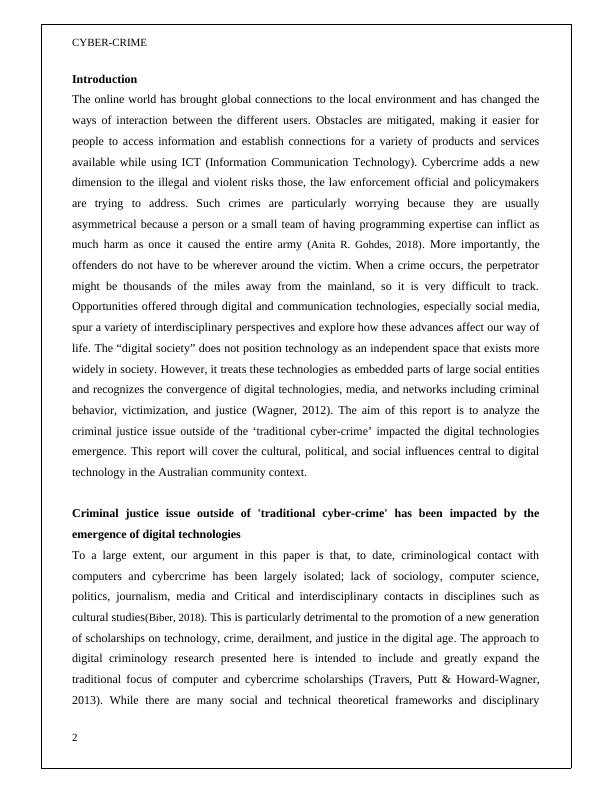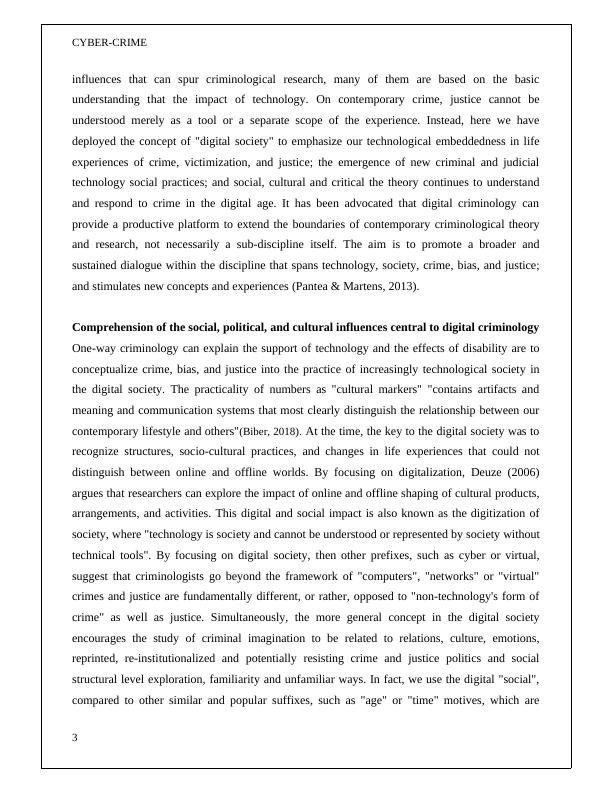Cyber-crime: Understanding the Impact of Digital Technologies
Critically examine how a criminal justice issue outside of 'traditional cyber-crime' has been impacted by the emergence of digital technologies.
10 Pages3557 Words58 Views
Added on 2023-03-20
About This Document
This report analyzes the impact of digital technologies on cyber-crime and explores the cultural, political, and social influences central to digital criminology. It discusses the challenges faced by law enforcement and policymakers in addressing cyber-crime in the digital age.
Cyber-crime: Understanding the Impact of Digital Technologies
Critically examine how a criminal justice issue outside of 'traditional cyber-crime' has been impacted by the emergence of digital technologies.
Added on 2023-03-20
ShareRelated Documents
End of preview
Want to access all the pages? Upload your documents or become a member.
Contemporary Issues in Crime, Safety and Security
|15
|3605
|167
Issues Due To Cyber Technology
|7
|1429
|89
Criminology and Criminal Justice: Analyzing Crime-Related News in Contemporary Society
|8
|1658
|242



